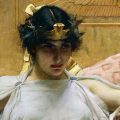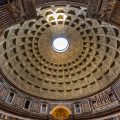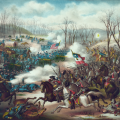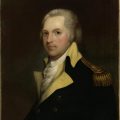The Renaissance was an exciting period of European history that spanned the 14th to the 17th century. It is remembered as a time of artistic, political, and economic “rebirth” that followed the Middle Ages. Let’s take a closer look at this remarkable era and explore some fascinating fcts about the Renaissance.
The term “Renaissance” was coined by French historian Jules Michelet in the 19th century and is derived from the Italian word for “rebirth”. The Renaissance was characterized by greater emphasis on humanism, increased interaction between different cultures, the rediscovery of ancient Greek and Roman texts, and various technological innovations.
One of the main causes of the Renaissance was increased trade between Europe and Asia which allowed for new ideas to spread throughout Europe. This resulted in a renewed appreciation for classical philosophy, literature, and art. The invention of paper also played an important role in this period as it allowed more people to access information quickly and easily without having to buy expensive books or manuscripts.
The Renaissance saw some remarkable achievements in art, science, architecture, literature, music and philosophy. Artists such as Leonardo da Vinci created beautiful works of art while scientists such as Galileo Galilei made great strides in astronomy. Writers such as William Shakespeare wrote plays that are still enjoyed today while philosophers such as Niccolo Machiavelli developed new theories abot politics and society.
During this period commerce also flourished with merchants trading goods across Europe using new inventions like the mariner’s compass and gunpowder. Exploration was also popular during this time with Christopher Columbus leading several voyages to discover new lands across the Atlantic Ocean.
Overall the Renaissance was an incredibly important period in European history that saw many advancements in science, technology and culture which stll influence us today.
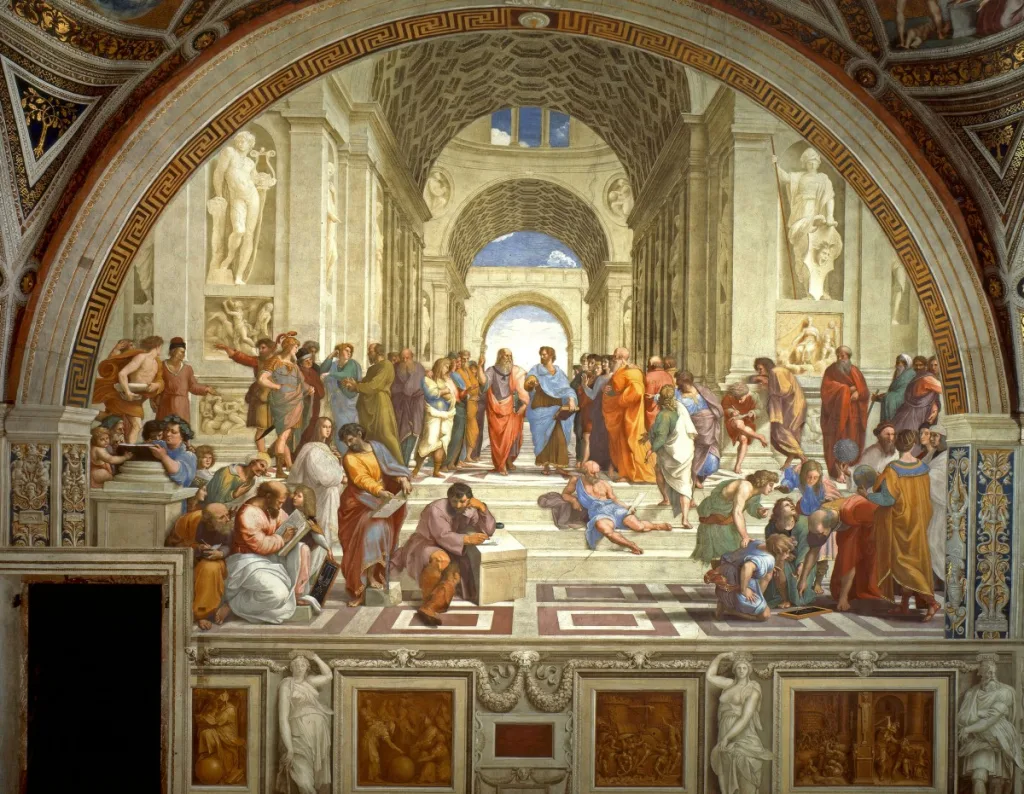
The Uniqueness of the Renaissance Period
The Renaissance was a period of unprecedented progress and growth in Western Europe. It was an era of great social, political, philosophical, and scientific advances. The Renaissance is unique in that it marked a shift away from the traditional Medieval worldview and ushered in an era of exploration, creativity, and innovation.
Renaissance thinkers embraced humanism and sought to understand the world through observation and reason rther than relying solely on faith. This shift in perspective led to new discoveries in science, art, literature, architecture, technology, engineering, exploration and more. During this time period, the public’s view on education changed drastically as well; the idea of learning for its own sake became increasingly popular.
The Renaissance also saw some major advances in technology such as papermaking, printing press invention by Johannes Gutenberg which allowed for the quick spread of knowledge across Europe and beyond. The mariner’s compass enabled navigators to explore new continents while gunpowder revolutionized military tactics.
At its core, what makes the Renaissance unique is its emphasis on human potential and creativity as a means to achieve progress. This period laid the foundations for modern society by introducing new ideas about art and philosophy while also bringing about technological advancements that enabled furher exploration of our world.
The Renaissance Era: A Time of Transformation
The Renaissance era is best known for its creative and intellectual achievements in areas such as literature, art, and philosophy. During this time period, the rediscovery of classical works from the Greeks and Romans provided a new level of inspiration to many European thinkers. This period saw the development of Humanism, which focused on developing an individual’s potential, as well as a renewed interest in science and exploration.
The Renaissance was also a period of great political upheaval with the rise of nation-states throughout Europe. This led to increased competition between states and eventually to the formation of larger empires across Europe. This period also saw advances in technology such as the printing press which helped disseminate information widely throughout Europe at an unprecedented rate.
Finally, the Renaissance was a time of great artistic achievement with renowned artists such as Leonardo da Vinci, Michelangelo, Raphael, Donatello and Botticelli creating masterpieces that have continued to inspire countless people around the world. The development of new techniques in painting such as perspective allowed artists to create realistic representations of their subjects that had not been seen before. Music too flourished during this time with composers such as Monteverdi producing some highly influential works that still resonate today.
The Three Key Factors of the Renaissance
1. The rediscovery of ancient Greek and Roman texts: During the Renaissance period, there was an increased focus on the study of classical literature and philosophy, which was made possile by the rediscovery of ancient Greek and Roman texts. This renewed interest in classical culture provided a renewed source of inspiration and perspective for Renaissance thinkers, thus allowing them to explore new ideas and approaches to their work.
2. The emergence of Humanism: Humanism was a philosophical movement that emerged dring the Renaissance period that focused on human potential, emphasizing the individual’s worth and dignity, as well as the importance of education. Humanists rejected traditional religious ideas in favor of human-centered values that encouraged creativity, exploration, and innovation.
3. New artistic and technological innovations: During this period there were many advances in art, literature, architecture, science, technology and engineering that helped shape and define this era. For example, one major development was the introduction of linear perspective in art which allowed for more realistic depictions; another was the invention of movable type printing which allowed for more widespread distribution of books; finally there were advances in mathematics such as decimal fractions which allowed for more precise calculations. All tese new technological advancements had an immense influence on the culture of the time by allowing people to communicate more easily with each other across borders or distances.
The Three Major Periods of the Renaissance
The tree major periods of renaissance are the Carolingian Renaissance, the Ottonian Renaissance, and the 12th-Century Renaissance.
The Carolingian Renaissance was a period of intellectual and cultural revival beginning in the late 8th century during the reign of Charlemagne, first emperor of the Holy Roman Empire. This period saw a revival of classical culture, including philosophy, literature, and art. It was also marked by an increase in literacy, an increase in religious and political life, and a shift towards centralized governments.
The Ottonian Renaissance was a period of intellectual and cultural renewal that began in Germany during the 10th century under the rule of Otto I. This period saw increased interest in classical literature as well as advances in science, particuarly astronomy. It was also marked by an increase in religious life as well as advances in architecture, sculpture and painting.
The 12th-Century Renaissance was a period of intellectual and cultural revival that began around 1100 CE. This period saw a surge in scholarship on classical antiquity as well as advances in science and technology. Notable figures from this time include Abelard, Averroes, Maimonides, Thomas Aquinas and Roger Bacon. The 12th century also saw increased interest in mathematics, medicine, engineering and law which laid the foundation for universities to be established throughout Europe.
The Significance of the Renaissance
The Renaissance was a period of great significance in European history, as it marked the beginning of the modern era. During this period, there were unprecedented advances in the arts, sciences, and technology. It was also a time of great social and political change, with the rise of nation-states and the development of new ideologies.
Renaissance thinkers sought to rediscover classical knowledge and develop new ways of thinking. This resulted in an innovative humanism that encouraged individual achievement and creativity. Artists began to explore techniques such as linear perspective and chiaroscuro (the use of light and dark) that had not been used since antiquity. Writers experimented with epic forms while developing new genres such as the essay, satire, epigram, and the sonnet. Philosophers questioned traditional precepts and provided innovative theories in fields such as politics and science.
Inventions such as movable type printing allowed for mass communication and accelerated the spread of ideas throughout Europe. This played an important role in stimulating furter progress in art, science, technology, religion, philosophy, politics, economics, literature, music and other areas during this time. In addition to these technological innovations were discoveries in travel that opened up new lands previously unknown to Europeans.
Overall, the Renaissance was a pivotal moment in history that transformed European culture from a medieval outlook to one that embraced modernity. It was a period of social transformation that contributed greatly to the development of western civilization as we know it today.
The Origin of the Term Renaissance
The Italian word ‘Rinascita’ was firt used in the 14th century to describe a period of artistic and cultural revival. This revival was inspired by the Classical art and culture of Ancient Greece and Rome, which had been lost during the Middle Ages. During this period, artists began to explore new techniques and styles, including more realistic representations of people, architecture, and nature. This shift in artistic style was accompanied by advances in science, philosophy, and technology that helped shape the modern world. In short, the Renaissance was a period of great innovation and creativity that paved the way for European societies to evolve and grow. As such, it has become known as one of humanity’s most important historical eras.
The Most Important Person of the Renaissance
The most important person during the Renaissance was undoubtedly the Italian polymath, Michelangelo. He is widely regarded as one of the greatest artists in history, and his works are still renowned today. His most famous works include the sculpture David, and the ceiling fresco of the Sistine Chapel in Rome. He was also a prolific architect and poet, havig designed several churches and written many poems. Throughout his life, he was constantly pushing boundaries with his artistry and creativity, which is why he holds such a prominent place in history.
The Beginnings of the Renaissance
The Renaissance began in Italy during the 14th century, after the end of the Middle Ages. Though there is some debate over who is responsible for launching this period of creativity and innovation, many believe that writers such as Francesco Petrarch and Giovanni Boccaccio were instrumental in its beginnings. They are credited with helping to bring about a revival of interest in classical literature, philosophy, and art from ancient Greece and Rome, setting off a cultural revolution that would eventually spread across Europe. The Renaissance also saw an increase in humanism, which was centered around the idea that individuals could shape their own destiny through education and creativity. This period gave rise to some of the most influential artists, scientists, philosophers, and leaders of all time.
The Impact of the Renaissance on Society
The Renaissance was a period of great cultural, social and technological advancement, which had far-reaching effects on society. It marked the transition between the Middle Ages and the modern age, and it saw a resurgence of interest in ancient Greek and Roman culture. This led to an explosion of artistic activity, with new styles of painting, architecture, literature and music emerging.
The Renaissance also brought about changes in science and technology. New scientific discoveries laid the foundations for the scientific revolution that would follow later. Inventions such as the printing press allowed for greater access to books and other forms of learning, which spurred an increase in literacy rates acrss Europe. The invention of navigational tools such as compasses and astrolabes enabled sailors to explore distant lands which helped to increase global trade.
In addition to its cultural contributions, the Renaissance also had major political implications. The rise of humanism led to new ideas about government, with an emphasis on individual rights and liberties. This ultimately led to an increased role for citizens in government decisions, as well as an increased focus on democracy throughout Europe.
The Renaissance impacted every aspect of life in Europe during this time period, from art and science to politics and economics. It laid the foundation for much of what we now cosider “modern” civilization today.
The Most Significant Outcome of the Renaissance
The most important results of the Renaissance were an increased focus on individualism, a flourishing of the arts and culture, a renewed interest in scientific pursuits, and a religious reformation.
In terms of individualism, the Renaissance ushered in an era whee one’s own success and worth was increasingly measured by one’s own efforts rather than those of the church or state. This resulted in increased self-expression which manifested itself in artistic works such as paintings, sculptures, and literature.
The arts flourished durig this period as artists explored classicism and realism, with works from greats like Leonardo da Vinci, Michelangelo Buonarroti and Raphael inspiring generations that followed. Similarly, advancements were made in astronomy and mathematics as scholars sought to better understand the world around them through empirical evidence.
The Protestant Reformation was also strongly influenced by these changes, as people began to question traditional Church authority. This resulted in new religious movements such as Calvinism which further spread throughout Europe during this period. These chnges had a lasting influence on the development of Western society that continues to be felt today.
The Origins of the Renaissance
The Renaissance began in Italy in the 12th century as a result of rediscovering the incredible art and ideas of Ancient Rome. After the fall of the Roman Empire in the 4th century, Europe was plunged into centuries of darkness, known as the Dark Ages. During this time, much of ancient Roman culture was forgotten or lost.
Beginning around the 12th century, however, humanist scholars began to rediscover ancient literature, philosophy and works of art. This led to a revival of Ancient Roman and Greek culture in Italy. This ‘rebirth’ bcame known as The Renaissance and marked a period of great intellectual growth across Europe.
During this era, many great achievements were made in fields such as art, architecture, literature, science and mathematics. The period saw some of history’s most famous artists such as Leonardo da Vinci and Michelangelo Buonarroti create thir masterpieces. It also saw the invention of printing press that allowed books to be printed more quickly than ever before and made knowledge accessible to more people than ever before.
The Renaissance ultimately ushered in a new era for Europe; one dominated by enlightenment and exploration rather than dark superstition and ignorance that had characterized much of the Middle Ages. It laid the foundation for modern society as we know it today.
Number of Renaissance Periods
There have been three distinct Renaissances throughout history, with the fourth Industrial Revolution (4IR) on the horizon. The First Renaissance began in Italy during the 14th century and was a period of cultural and economic rebirth after the decline of the Roman Empire. This era saw an increase in education, art, literature, science, music, and philosophy. The Second Renaissance occurred during the 17th century and was known as the Age of Enlightenment. During this period, there were major advances in science, technology, economics, politics, religion, and culture. The Third Renaissance began in Europe during the 19th century and was characterized by industrialization and rapid technological progress. This period saw a shift from agriculture to industry as well as advancements in communication technology such as telephone lines and telegraphs. Lastly, the Fourth Industrial Revolution (4IR) is anticipated to be a new era of digital transformation that will bring about innovative technologies such as artificial intelligence (AI), 5G networks, self-driving cars, blockchain technology, 3D printing and more. All four of these periods have had a profound impact on society throughout history.
The Renaissance: The ‘Golden Age’
The Renaissance, which occurred between the 14th and 17th centuries, is often referred to as the Golden Age due to the tremendous amount of economic growth, technological advancement, and cultural achievements that took place during this period. During this time, Europe saw a resurgence in trade, driven by innovations such as double-entry bookkeeping and joint-stock companies which allowed for greater investment and risk-taking. This surge in economic activity created the wealth necessary to fuel the artistic and intellectual achievements of the period. Artists such as Leonardo da Vinci, Michelangelo, and Raphael developed groundbreaking techniques of painting and sculpture that still influence art today. Writers like William Shakespeare crafted works that are still read around the world. Philosophers such as Machiavelli developed new ways of thinking aout politics and war. All of these advances combined with an increasing level of social mobility made for a culturally vibrant age that is still known today as the Golden Age.
Conclusion
In conclusion, the Renaissance period was a time of great change in Europe, marked by a number of developments in art, culture, politics, and technology. This period saw the revival of classical philosophy and literature, increased interaction between different cultures, technological advances such as the invention of paper and the mariner’s compass, and the emergence of humanism. It also saw the growth of commerce and exploration which led to the discovery of new continents. The Renaissance was an incredibly influential period in European history and its effects are still felt today.


